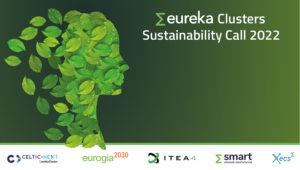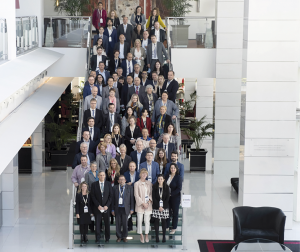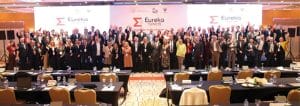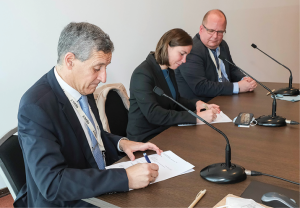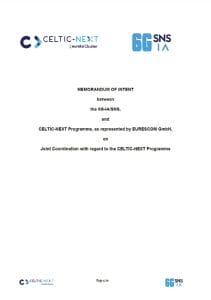Collaboration for faster terrestrial and non-terrestrial convergence

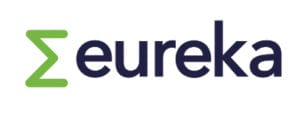
On 4th April 2022, Eureka Cluster CELTIC-NEXT and the 6G Smart Networks and Services Industry Association (6G-IA) signed a Memorandum of Understanding (MoU), which aims at establishing synergies and complementary activities in collaborative ICT research. The MoU will help foster economic growth and jobs through coordinated R&D&I activities and the commercial exploitation of generated results. The collaboration aims to leverage the complementarity of 6G-IA and CELTIC-NEXT and build on synergies to maximise the return on investment and to support achieving the UN Sustainable Development Goals.
ICT has become, more than ever, a pillar of sovereignty and resiliency in the rapidly changing social, political and economic environment of today and its regional battlefields. The Russian war against Ukraine as well as the measures against the COVID-19 pandemic have shown how critical it is to count on both terrestrial and non-terrestrial ICT services, as together they constitute one of the critical infrastructures of a country, especially considering the digitalisation of the society and the vertical industries.
Therefore, it is mandatory to increase and leverage to its maximum the European and allied countries’ funding to reach a critical mass of R&D&I and a faster time-to-market for the European countries and their allies’ ICT industry.
This Memorandum of Understanding provides the platform for leveraging on each signatory’s strengths and cooperation, to support sovereignty and resiliency for Europe and allied countries.
The purpose of this MoU is to set out a simple framework where the signatories can identify the complementary nature of their respective objectives and to identify and implement shared activities that benefit both initiatives and contribute to the achievement of their goals.
The signatories aim to leverage the diversity of 6G-IA and CELTIC-NEXT as well as the fact that their projects are somewhat sequential in terms of their Technology Readiness Levels (TLRs), to maximise the return on the respective investments and increase the impact on the Sustainable Development Goals.
The signatories will focus on encouraging cross-programme discussions and workshops on potential technology pathfinders and solutions, with a view to stimulating a pipeline of new projects for both initiatives and sharing reciprocal contributions to each other’s Strategic Research and Innovation Agenda (SRIA) documents.
The focus of the cooperation is to stimulate the respective communities to consider the issues in a holistic way considering the “end-to-end” perspective of the new communications services being enabled by 5G and 6G technologies, as well as developing an understanding of the economic, environmental, and societal benefits.
How the MoU will be implemented
To support the achievement of their common objectives, the signatories intend to:
› Create awareness and promote opportunities for collaboration within and across the respective communities
› Consult mutually on their SRIAs
› Collaborate on the organisation and execution of activities with a view to reaching the common objectives identified
› Participate in and support suitable events organized by the other signatory
› Plan and manage joint activities in areas of common interest in line with the signatories’ respective legal frameworks
› Undertake joint communication, as appropriate
› Leverage their relevant resources and expertise necessary to ensure the success of the common objectives
› Regularly review the effectiveness of this collaboration, with reference to the priorities agreed
Conclusion
This MoU is the second of a series of new collaborations for CELTIC-NEXT. This fulfils the objectives set by CELTIC-NEXT’s Core Group to develop CELTIC-NEXT’s support to and impact for the ICT community by enriching its DNA with new verticals and communities. The 6G-IA community is also eager to collaborate more with the CELTIC ICT community. This MoU offers the perfect playground for both communities to meet and work together on strategic topics and projects.

